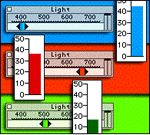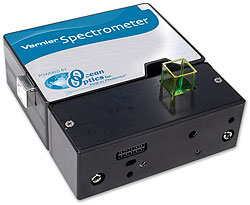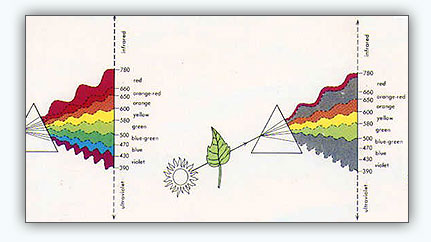7. Why do plants grow better under certain lighting conditions than others?
So here is the problem with which you are faced. You have someone who appears to have found that plants don't grow as well (or die) under some types of light and he wants to know why, so he asks you and wants to know what evidence you can show him. So first you have to decide what parameters can you truly manipulate or measure. What do we mean by "different types of light"? Well incandescent and flouresent lights are different, but how? Different heat output. But that doesn't fit the question at the top of the investigation. Aha, so maybe they differ in the colors of the light they emit. What does that mean? Well what does the background information in your lab manual mention? What about what you have learned in lecture (The Rainbow Connection) about light?
OK, so let's say you think that infrared light is something to test (Why?). Do you shine it on the plant and measure its growth? Would you really see a measurable difference in plant growth in 2 hours? (Hint - No!). Would this experiment answer the questions asked in the background material? He already has evidence that the plants don't grow as well, he wants to know WHY! Showing that plants grow better under different colors of light will not answer his questions anyway.
Is there a parameter that is correlated with growth that you could measure? Growth requires energy. So this should make you think about metabolic rate and cellular respiration (Out of the Rainforest), concepts that involve the production and use of ATP. But is this type of ATP production dependent on light in any way that we have discussed? What process that is dependent on light and that only plants (and algae and cyanobacteria) do provides "food" and energy? (Hint - look at the question for this investigation!).
You have to come up with a hypothesis in the truest sense. What do we mean by that? Hypotheses are explanations for phenomena - What is the mechanism or cause for what is observed. Look at the concept map in the investigation. It shows a variety of relationships and posses questions about the process you should be investigating. Have you looked over the related chapter in your text (8/8 ) have you reviewed the CD-ROM (Check the scenario study guide). You should be testing some idea of why the plants do not grow well under different color lights not whether they grow better under different color light and you can't test growth but must measure something that contributes to growth.
|
What did you learn from the pre-lab? It should help introduce you to some of the new tools and techniques mentioned in this investigation. What is a spectrometer and what does it measure? What hypothesis could you use it to test? What is chromotography? What does it measure? What hypothesis could you use it to test? What did you learn from using the Logal Explorer© software (available for free from the START menu in the LRC or by subscription on the WWW:Logal Explorer© Software) First Look? This software is a simulation that allows you to adjust and investigate many different parameters. You can skip the lessons and manupulate the simulation directly if you want. This is another way to experiment. Do you have an idea on how you might use one of the other simulations to contribute data that you might use to support one of your hypotheses? You might also look at "why are leaves green?" under " Explorations" (Logal Software) |
|
 source |
| Absorbance | Chlorophyll a | Transmittance |
| Absorption Spectrum | Chromatography | Visible Light Spectrum |
| Action Spectrum | Phycobilin | Wavelength |
| Carotene | Solvent/Solute | Xanthophyll |









 back to lab study-guides main page.
back to lab study-guides main page.